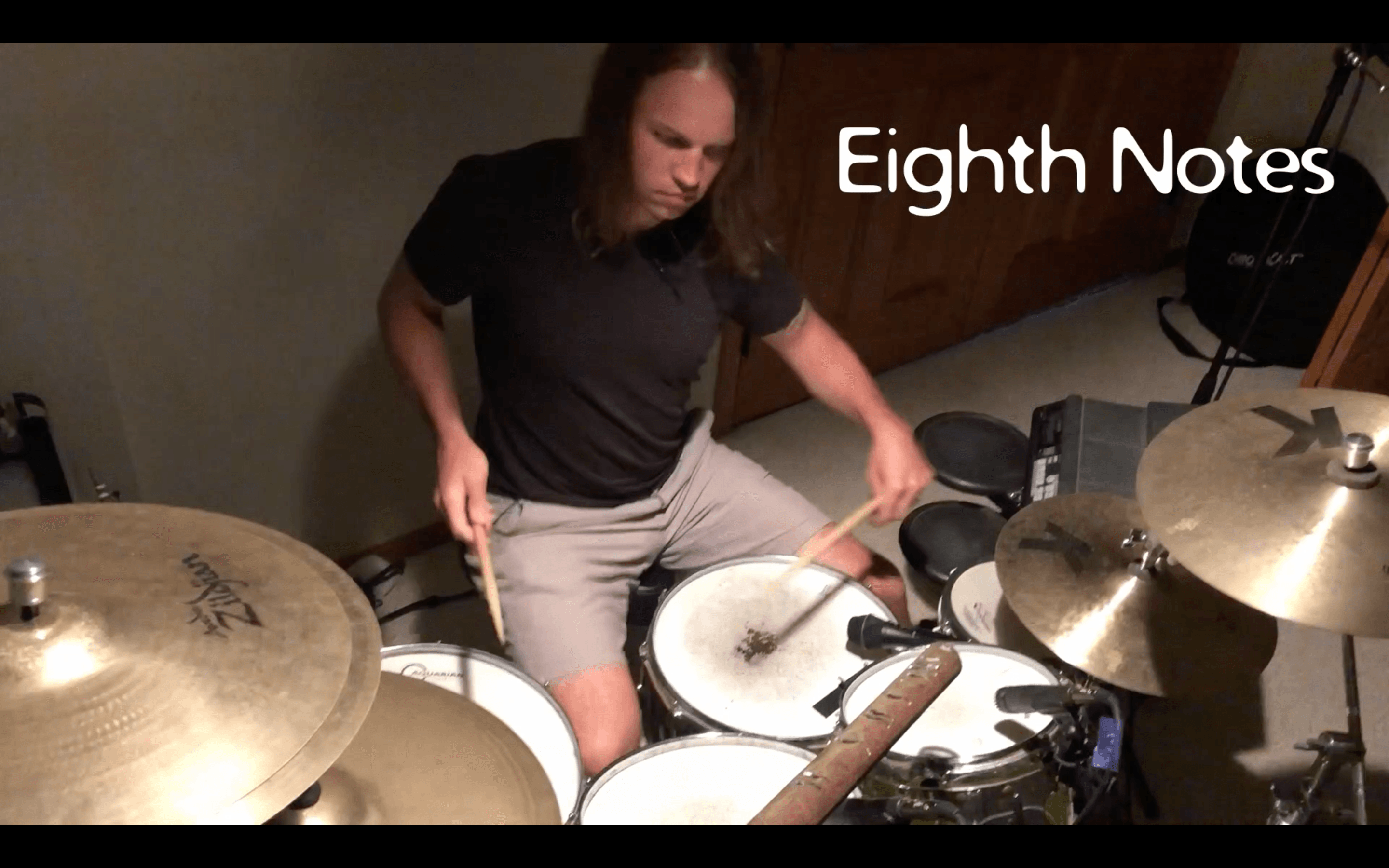To some, the idea of improvising is elusive as it is difficult. If you feel like you can’t improvise, then you probably just need to try a different approach. When you improvise, you can’t really be “wrong”. There isn’t a correct way to improvise.
Sure, you may want to stay in time or support the band, but you don’t have to. And, you shouldn’t expect to be able to do that right away. The best improvisations are captured when the musicians take risks out of their comfort zone. Sometimes you may want to make the time “elastic” to convey an idea in your head. Sometimes you are taking the forefront of the band for a solo or a transition into a new section or feel.
As long as your ideas are musical, confident, and purposeful, it can enhance the performance.
This exercise can help build confidence in improvising so you can push your comfort zone and create that magic on stage called improvisation. It has literally been one of the best things I have added to my practice regimen for many reasons:
- It can inspire deeper creativity whether your in a slump or are are feeling repetitious.
- It is a great ear trainer for deeper, longer, or more interesting phrasing.
- It can help you find weak spots in your sticking and/or coordination and independence so you know what you need to spend time working on.
- It can help you with timing, subdivisions, and metronome playing.
I was originally taught this exercise from my old teacher and longtime friend, Jesse Peterson, around the year 2000 or 2001. He was a former student of Dave King (The Bad Plus, Happy Apple, Dave King Trucking Company). If you are familiar of either of these guys playing, you can hear a masterful approach to phrasing and improvisation in their playing.
I was blown away when I saw that Dave actually referred to this exercise in a recent Drumeo video about improvising. When I saw this, I knew I wanted to share the clear and concise way Jesse taught me. He made it into an exercise with clear rules to improvise within. Concepts are more difficult for some of students to grasp without direct guidelines.
When Jesse showed this to me, he taught it as if it was a daily warmup and I think it can be a very powerful exercise if it’s done regularly. The genius behind Dave and Jesse literally changed my life and my drumming forever—and I’m not kidding. I am grateful that they taught me this exercise and I do not claim it as my own.
Improvised Rhythmic Permutations Exercise
Basically, set your metronome by choosing a tempo anywhere from 60 to 80 bpm or even up to 100 or 120 bpm depending on your skill level. With the metronome, improvise by hitting random sound sources as quarter notes only (directly on the metronome clicks). Do not hit the same sound source more than 2 or 3 times in a row. Be sure to incorporate all of your limbs and accents.
After improvising simple quarter note ideas and phrases, move on to quarter note triplets. After that continue onto eighth notes, eighth note triplets, sixteenth notes, and eventually sixteenth note triplets.
As you improvise hitting random sound sources, you will start to hear rhythmic phrases that you’ll want to react to. Embrace the idea that the phrases are longer than a one bar drum fill and allow them to extend beyond the barline. It is important that you still know where the beats AND downbeats are. This is where you ears will start to learn unique accents and phrasing.
It literally forces you to “think outside the bar lines”
Don’t limit yourself to clean hits on the drums and cymbals. Incorporate hi-hat foot splashes, ruffs and buzzes, cymbal chokes, drum rims, hardware slides, cymbal screeches, etc.
As you get comfortable with this exercise, you can begin to break the rules a bit by adding some rests, hitting 2 or more sound sources at the same time, hitting more than 2 hits on the same sound source. Just remember that it is important to set rules or guidelines to improvise within in order to explore your improv capabilities.
I have provided a video of myself doing this exercise as one of my warm-ups until I couldn’t keep it together anymore. If you don't make any mistakes when you're doing this, you're not taking enough riffs to explore new phrasing and rhythms!
Simplify or Challenge Yourself
At first you may want to keep it simple and remove the triplets. You could just go from quarter notes, to eighth notes and then to sixteenth notes. Eventually, you should add the triplets back in. You could even make it an advanced exercise by adding quintuplets, septuplets, and beyond!
To hear Dave King refer to this exercise, check out the video below and skip ahead to 19:43 or 31:25. He explains his approach to this idea and then plays an example. Make sure you take the time and watch the entire video—literally AMAZING and priceless lesson on improvisation.
Comment below with videos of your own versions of the “Improvised Rhythmic Permutations Exercise”! Thanks for reading!

